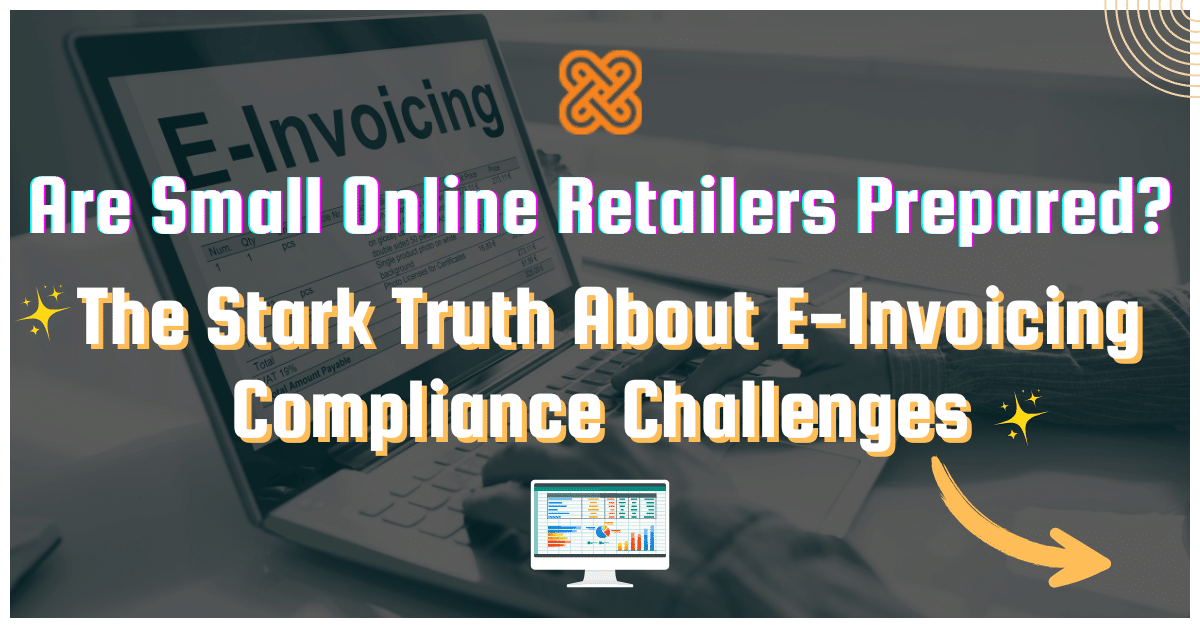The transition to e-invoicing has become a pressing issue for small online retailers in Malaysia, as regulatory compliance requires both technical readiness and robust supplier cooperation.
Short Summary:
- Small retailers face critical challenges in e-invoicing compliance, including supplier onboarding and technical integration.
- Significant regulatory changes are on the horizon, driven by the LHDN, requiring businesses to adapt quickly.
- Early adoption of e-invoicing can streamline processes, reduce errors, and enhance cash flow management for small businesses.
The landscape of online retail is rapidly evolving, and Malaysia’s small businesses must navigate the complex waters of e-invoicing compliance to remain competitive and compliant with local tax regulations set forth by the Lembaga Hasil Dalam Negeri (LHDN). As April 2025 approaches, it is essential for these retailers to align their invoicing practices with government mandates, particularly in the context of the increasingly complicated requirements surrounding electronic transactions.
One of the most significant challenges small online retailers face is not just setting up their e-invoicing systems, but ensuring that their suppliers are also equipped and willing to engage in e-invoicing.
According to experts at The Edge, “E-invoicing is only effective if a seamless electronic flow occurs between you and your suppliers.”
For many suppliers, especially smaller ones, the transition to e-invoices might seem daunting if they lack clear guidance or understanding. Therefore, ensuring that suppliers understand the expectations and benefits of e-invoicing is critical.
Challenges with Supplier Activation
The activation of suppliers is crucial for the success of e-invoicing. Retailers must proactively communicate their invoicing needs, accompanying such communications with effective educational resources. Many suppliers may be uncertain about what constitutes an e-invoice, leading to confusion and potential non-compliance.
- Clear Communication: Regular outreach to suppliers explaining what an e-invoice is and how they can submit it typically fosters a better understanding.
- Implementation of Low-Threshold Solutions: Retailers can mandate compliance through contract conditions that stipulate e-invoicing requirements.
- Use of Effective Tools: Providing clear tools and guides, such as brochures and resource guides, can significantly ease suppliers’ onboarding processes.
As e-invoicing becomes the standard, leading experts suggest that companies should not wait until compliance is mandatory.
Nazar Paradivskyy, VP of Regulatory Affairs at Pagero, states, “The best strategy is to act ahead of mandates and prepare your systems and processes.”
By strategically aligning with suppliers and informing them about the e-invoicing process, retailers can reduce friction and facilitate smoother transactions.
Changes in Compliance Landscape
With the new tax policies emerging from the LHDN, including updates to the MyInvois system, small retailers must stay abreast of compliance regulations. For instance, the LHDN has outlined numerous requirements affecting how e-invoices should be structured and submitted.
Key updates include:
- Standardized Formats: E-invoices must be generated in approved formats for seamless submission.
- Real-Time Reporting: Businesses will be required to report transactions promptly to tax authorities to enhance compliance.
- Integration with ERP Systems: Firms must ensure their existing accounting and management systems are outfitted with e-invoicing capabilities, which may require significant adaptation or upgrades to their infrastructure.
This compliance landscape is only expected to become more intricate as more provisions are implemented, necessitating proactive measures by small retailers. Retailers are advised to invest in training for their accounting teams to guarantee compliance and understand the intricacies of the new e-invoicing system.
Benefits of Early e-Invoicing Adoption
Embracing e-invoicing ahead of widespread regulatory enforcement translates into numerous operational benefits for businesses. These can include:
- Improved Cash Flow: E-invoicing expedites payments, enhancing liquidity.
- Reduced Paperwork: Automation minimizes reliance on paper invoices, thus decreasing administrative burdens.
- Fewer Errors: E-invoicing systems automate calculations, reducing the risk of human error in invoicing and payments.
- Management Efficiency: By streamlining the invoicing process, overall management of accounts payable and receivable improves significantly.
The emphasis on e-invoicing adoption reflects a paradigm shift in how businesses manage their financial transactions. As the global e-invoicing market is projected to experience significant growth—estimated at $62.68 billion by 2031—local retailers must position themselves advantageously to capitalize on this transition.
Conclusion: Preparing for E-Invoicing Compliance
Ultimately, the message to small online retailers in Malaysia is clear: the shift towards e-invoicing is not merely a regulatory imperative—it is a strategic advantage. The early adoption of systematic e-invoicing allows businesses to streamline operations, improve supplier relationships, and fortify their compliance posture in anticipation of future regulations. It is recommended that businesses engage experienced consultants or invest in dedicated e-invoicing solutions to enhance their readiness.
In conclusion, small online retailers must actively prepare for the shifts brought about by e-invoicing compliance requirements.
As echoed by compliance experts, “The move to e-invoicing is an inevitable part of the digital transformation in tax compliance, and readiness should not be a reaction, but a proactive initiative.”
By equipping themselves with the right knowledge, tools, and partner networks, Malaysian retailers can emerge successfully from this compliance evolution.


